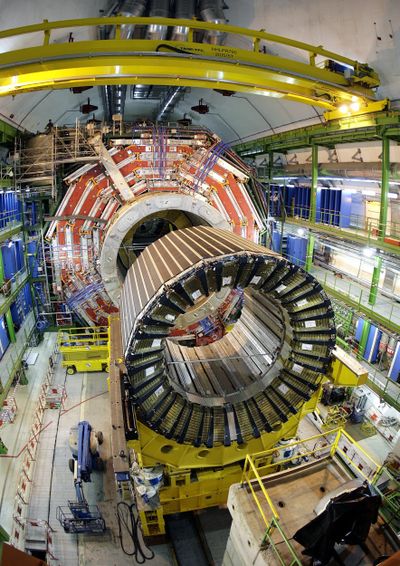Hadron collider breaks record
Even at less-than-full power, machine shows its potential

The problem-plagued European Large Hadron Collider, the world’s largest particle accelerator, is finally beginning to show off the technological muscle that is expected to produce some of the greatest scientific discoveries of the 21st century.
After months of repairs, operators at the $8 billion collider on the Franco-Swiss border successfully accelerated the machine’s twin beams of protons to 1.18 trillion electron volts Monday. That surpasses the previous collider record of 0.98 trillion electron volts, set in 2001 by America’s Tevatron collider at Fermilab outside Chicago.
Such power suggests the Hadron collider may yet do what its creators had hoped – recreate conditions that existed shortly after the Big Bang.
The collider isn’t even at full power yet. In coming weeks, the international team of physicists and engineers who built the machine in a 17-mile circular tunnel 300 feet underground plans to gradually increase the energies in each of the two proton beams. Eventually, scientists hope to produce 14 trillion electron volts by colliding the beams at just a whisker below the speed of light.
That not only would help researchers understand the conditions that led to the development of today’s universe of stars, galaxies and nebulae, but also could unmask the long-sought Higgs boson particle, one of the most elusive and mysterious objects since the yeti.
“That’s the Holy Grail,” said Mark Wise, a physicist at the California Institute of Technology.
“We are still coming to terms with just how smoothly the LHC commissioning is going,” Rolf Heuer, director general of the European Organization for Nuclear Research, or CERN, said in a statement. “It is fantastic. However, we are continuing to take it step by step, and there is still a lot to do before we start physics in 2010. I’m keeping my champagne on ice until then.”